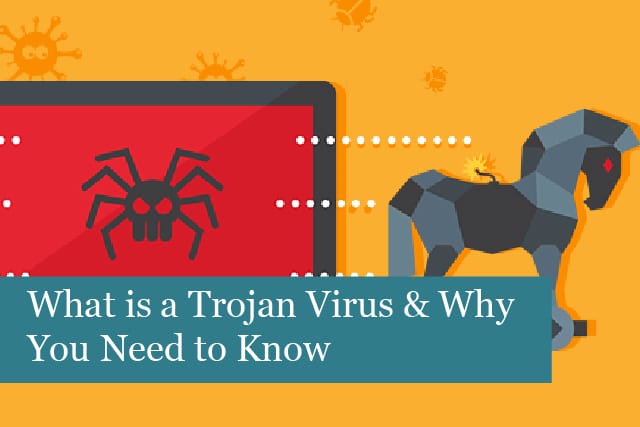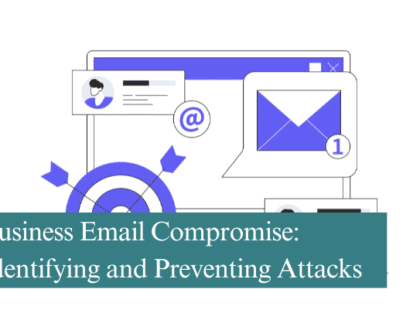
A Trojan horse is a malicious program named after the Trojan horse from the Odyssey, an epic Greek poem. Like the horse in the poem, the Trojan virus contains malware, which hackers use to steal data. The malicious program may be hidden in an email attachment; once opened, the malware is then installed onto the device, where it can wreak havoc.
While the term “Trojan horse virus” is used, this isn’t truly a virus. Instead, it’s malicious code or software. An example of a Trojan virus may look like an innocent piece of software; however, once it has been downloaded, it installs malicious code onto the device. After this, the malware is then activated and begins to work. From that point on, hackers can gain control of the device, steal credentials and data, and lock the user out completely.
How Do Trojans Work?
Trojan viruses look for a way to overcome either the lack of user’s knowledge about security or poor security measures on a computer or device. Some people to this day don’t even use antivirus or anti-malware to keep devices safe.
In the case of a Trojan horse, the file may come attached to an email in the form of an image or another type of file. The email looks like it’s come from a trusted friend, so the human urge is to open the email and download the picture or file.
When this occurs, the malicious code is installed and activated on the device. The program may send malicious content to other files on the device or could even send emails out looking as if you’d sent them.
What’s more, each Trojan has a different purpose, which means each one is unique and different. It just depends on what the bad guys want to accomplish.
Most Common Types of Trojan Viruses
Backdoor Trojans: hackers gain remote access to a device and take control. They may upload, download, or even delete files.
Rootkit Trojans: these are hidden very well to keep them from being discovered. This type of malware is intended to cause the most amount of damage possible.
Distributed Denial of Service (DDoS) Trojans: this takes place when a computer is disabled by an overflow of requests, usually from a number of different sources all at the same time.
Downloader Trojans: these are files that are written for the purpose of downloading more Trojans onto a device.
Exploit Trojans: uses a code to find a weakness or exploit in software
Banker Trojans: this type of program is primarily geared to steal banking and recognise shopping data
How to Spot a Trojan?
A Trojan horse resembles a file that’s attached to an email from a trusted source (such as your bank, a friend, and more). The Trojan is usually attached to the email, sometimes as an image file.
When the files are downloaded and activated, you may notice some strange behaviour on your computer or device. For instance, your computer may suddenly become slow, your web browser may be filled with pop-ups and spam, more.
Other symptoms of a Trojan horse may include your computer crashing all of a sudden and more email spam is being sent to you. These are all signs that your computer could have become infected with a Trojan.
If you suspect a Trojan has infected your computer, then the first thing to do is check the settings for the apps and programs you use. Make sure each program and app are those you have installed. If you find anything that you can’t recognise, this could be a Trojan. Let your IT department know, and they’ll run checks and scans to determine if the file is a Trojan horse.
Keep Your Computer Safe from Trojans
You can take some steps to keep your computer safe from Trojan horse attacks. The addition of Internet security measures is an excellent way to ensure you stay safe from Trojan viruses. So, be sure to install both antivirus and anti-malware programs on your computer. Regularly update the programs and then run scans on a regular basis. The scans will check your computer for any type of infection, including a Trojan horse.
Next, keep your operating system updated and patched. Some Trojan horses are able to find hoes in outdated computer operating systems. This makes it easy for cybercriminals to install and launch malware attacks from that device.
Another way to keep your computer safe is by using strong, complex passphrases for each online account and service. Firewalls are also effective against this type of attack. And avoid opening any emails that look suspicious. If it looks like it’s a legitimate message from a trusted source, then pick up the phone and call to verify if they sent the email or not. Don’t click on links or files attached to the email in question.
Regular backups of your computer are another effective measure you can use to keep data safe. There are many ways to back up your device. One of the easiest is backing up the computer to secured cloud storage. This way, if your computer is ever infected by a Trojan horse, you’ll have the original files stored safely and securely from the hackers.
How to Remove a Trojan Horse?
If you’re at work, then be sure to contact the IT department, and they’ll let you know what to do next. In most cases, they will take care of the issue, so you won’t have to.
On the other hand, if you’re using a personal computer at home, you can try these steps to remove a is to use your installed antivirus or anti-malware program. This type of software contains tools needed to get your computer back and running again after an attack.
After this, be sure to keep the OS and apps updated regularly. If you don’t already have antivirus or anti-malware programs installed, then be sure to download and activate these on your computer. These are excellent tools to keep you, your device, and your personal data out of the hands of cybercriminals.
Recommended Posts

Are you making the most of your Microsoft 365 licensing?
4th July 2025


